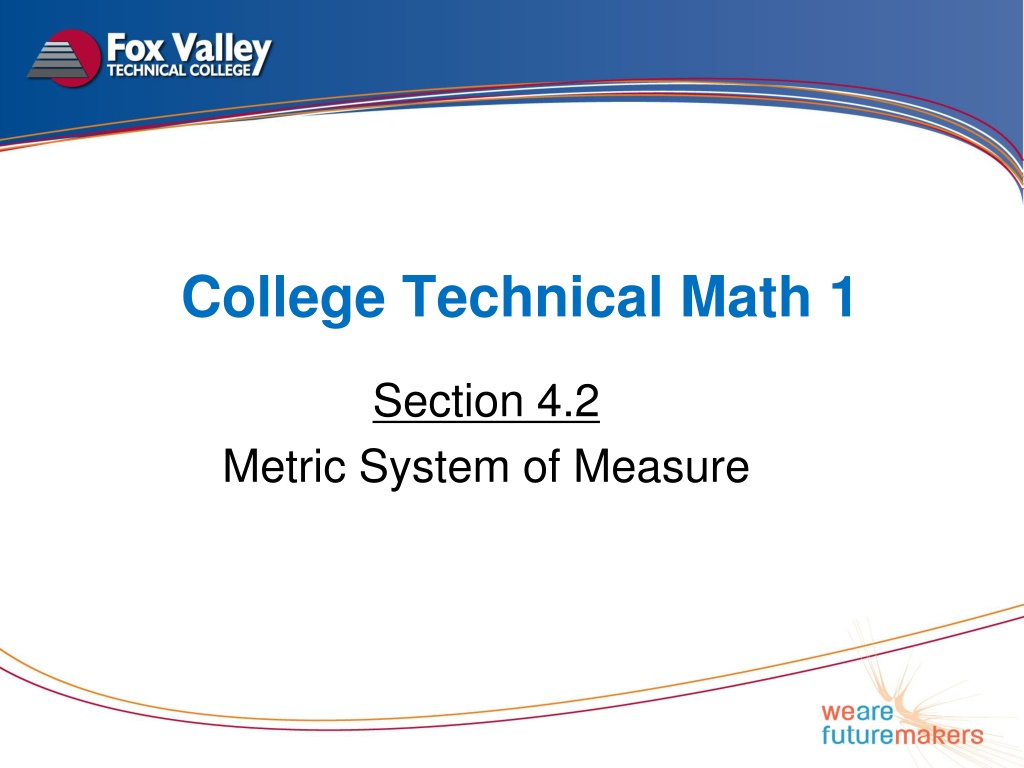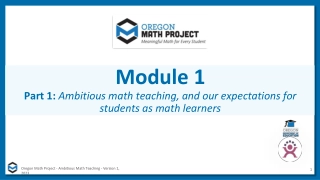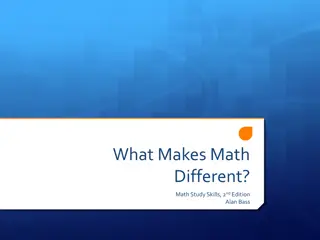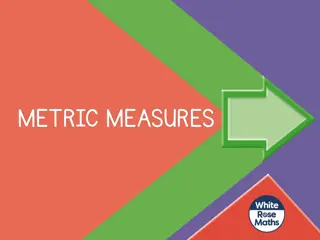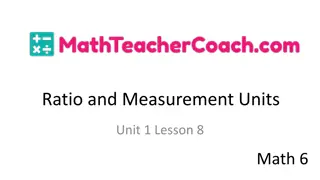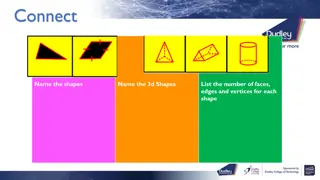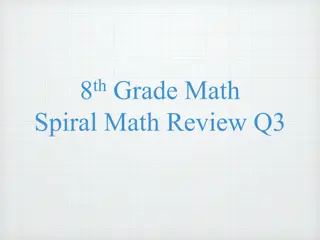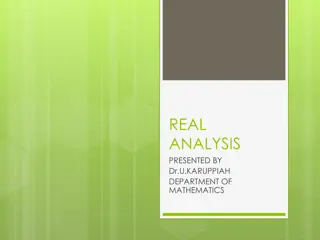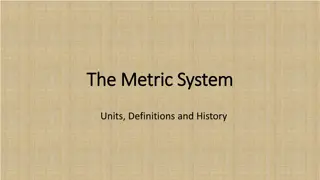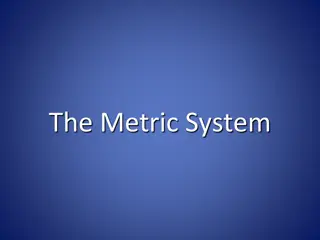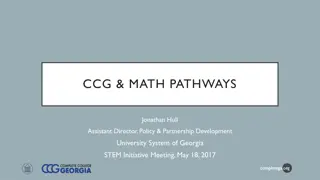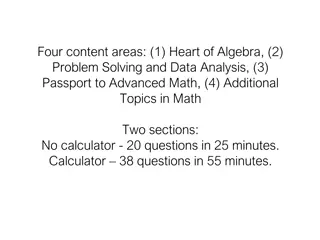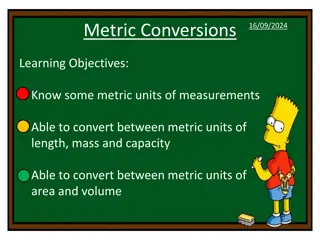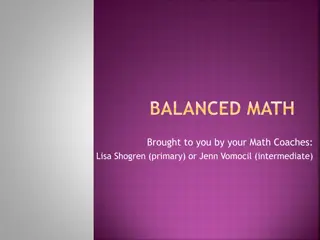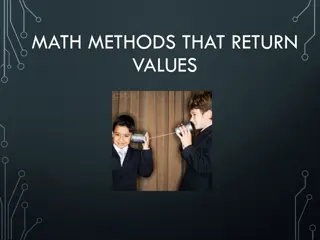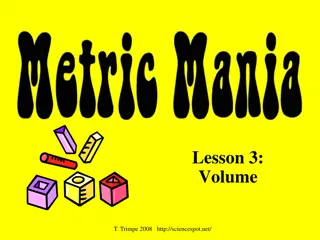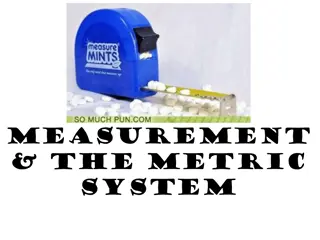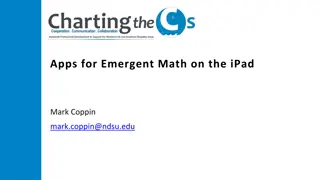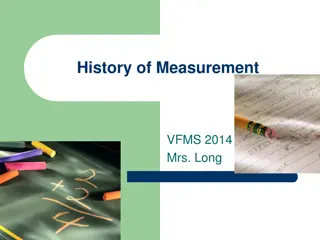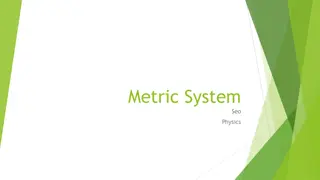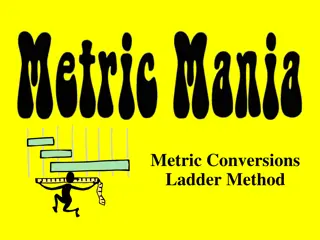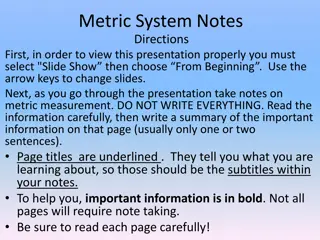Understanding the Metric System in Technical Math
The Metric System, or International System of Units (SI), is based on powers of 10 and offers a systematic approach to measurement. With base units like meters and grams, and prefixes like kilo- and milli-, it allows for easy conversion between larger and smaller units. This educational resource covers key concepts and examples related to the Metric System, helping learners grasp its significance in technical math applications.
Download Presentation

Please find below an Image/Link to download the presentation.
The content on the website is provided AS IS for your information and personal use only. It may not be sold, licensed, or shared on other websites without obtaining consent from the author. Download presentation by click this link. If you encounter any issues during the download, it is possible that the publisher has removed the file from their server.
E N D
Presentation Transcript
College Technical Math 1 Section 4.2 Metric System of Measure
The metric system (International System of Units or SI) is a measurement system based on powers of 10. Every category of measure has a base unit which with the addition of the base 10 prefixes represent larger or smaller units of measure.
Base unit meter (m) A meter is slightly larger than a yd Measure lengths and distances (room dimensions, land dimensions, heights of buildings, etc.)
kilometer (km) = 1000 m A kilometer is about .6 miles Measure long distances(from city to city, driving speeds, etc.)
1 centimeter (cm) = 100? A centimeter is about .4 inches (width of a paper clip) Measure medium sized objects(tires, clothing, textbooks, etc..)
1 millimeter (mm) = 1000? A millimeter is about the thickness of a dime Measure small sized objects(bolts, moles, etc..)
Choose the most reasonable metric measure. (Skill Check) Height of a 6-year old pediatric patient: (a) 1.5 km (b) 1.5 m (c) 1.5 cm (d) 1.5 mm
Choose the most reasonable metric measure. (Skill Check) Distance from Los Angeles to San Francisco: (a) 800 m (b) 800 mm (c) 800 km (d) 800 cm
Choose the most reasonable metric measure. (Skill Check) Overall accumulation of snowfall: (a) 8 cm (b) 8 m (c) 8 km (d) 8 dkm
Base unit gram (g) Mass of 1 cubic cm of water Weigh light objects(paper clips, sugar cubes,coins, etc.)
kilogram (kg) = 1000 g A kilogram is about 2.2 pounds Weigh regular objects (people, books, automobiles, etc.)
1 milligram (mg) = 1000? Weigh small objects(vitamins, prescription drugs, etc..)
Choose the most reasonable metric measure. (Skill Check) Weight of a teaspoon of sugar: (a) 2 g (b) 2 mg (c) 2 kg (d) 2 hg
Choose the most reasonable metric measure. (Skill Check) Weight of a Vitamin C tablet: (a) 184 kg (b) 184 g (c) 184 cg (d) 184 mg
Choose the most reasonable metric measure. (Skill Check) Weight of a bag of dog food: (a) 25 g (b) 25 kg (c) 25 mg (d) 25 dg
Base unit Liter (L) Liter is approximately equal to a quart Determine the volume of regular objects(soda, gas, etc.)
1 Milliliter (mL) = 1000? Same volume as a cubic centimeter ??3 Determine the volume of smaller objects (medicines, perfumes, etc.)
Choose the most reasonable metric measure. (Skill Check) Volume of a tank of pesticide: (a) 60 L (b) 60 mL
Choose the most reasonable metric measure. (Skill Check) Volume of a glass of orange juice: (a) 0.12 mL (b) 0.12 L
Choose the most reasonable metric measure. (Skill Check) Dose of cough medicine: (a) 100 L (b) 100 mL
Since the metric system of measure is based on powers of 10, conversions between units of measure in the metric system involve either multiplying (moving the decimal point right) or dividing (moving the decimal point left) by powers of 10.
kilo hecto deka deci centi milli . . micro k h dk Base d c m . . ? Knights Hate Dragons Because Dragons Can Melt ..Metal!
Move the decimal point right kilo hecto deka deci centi milli . . micro k h dk Base d c m . . ? Move the decimal point left
Convert 3.45 km to m. (Example) kilo hecto deka deci centi milli . . micro k h dk Base d c m . . ? Move the decimal point 3 places to the right 3.45 ?? = 3,450 ?
Convert 12,300 mg to kg. (Example) kilo hecto deka deci centi milli . . micro k h dk Base d c m . . ? Move the decimal point 6 places to the left 12,300 ?? = 0.0123 ??
Complete each metric conversion. (Skill Check) 8 ? ?? ??? 80 ??? 4 ? ?? ?? 400 ??
Complete each metric conversion. (Skill Check) 8200 ?? ?? ? 8.2 ? 17 ?? ?? ? 0.17 ?
Complete each metric conversion. (Skill Check) ??? ???? ? ??? ?? 47 ??? 4.7 ? ??? ???? ?????????? ??? ?? 4,389 ??? 438.9 ??
Since the metric system is based on the base 10 decimal system, as long as the unit of measure is the same for two quantities, the operations on metric units (adding, subtracting, multiplying, and dividing) are completed the same as with any real number.
Add: 5 ?? + 9 ?? (Example) 5 ?? + 9 ?? = 50?? + 9 ?? = 59 ?? Subtract: 14 ?? 39 ? (Example) 14 ?? 39 ? = 14 ?? 3.9 ?? = 10.1 ??
Multiply: (50.32 ??)(3) (Example) (50.32 ??)(3) = 150.96 ?? Divide: (54 ??) 6 (Example) 54 ?? 6 = 9??
A patient absorbs 175 mL of fluid through an IV. If the bag has 825 mL left, how much fluid was in the bag to begin with? (Skill Check) 1000 ??
653 dkL of orange juice concentrate is removed from a vat containing 8 kL of the concentrate. How much concentrate remains in the vat? (Skill Check) 1.47 ?? = 147 ???
An IV bag holding 250 mL of an antibiotic is calibrated (marked off) into five equal sections. How many milliliters are represented by each section? (Skill Check) 50 ??
